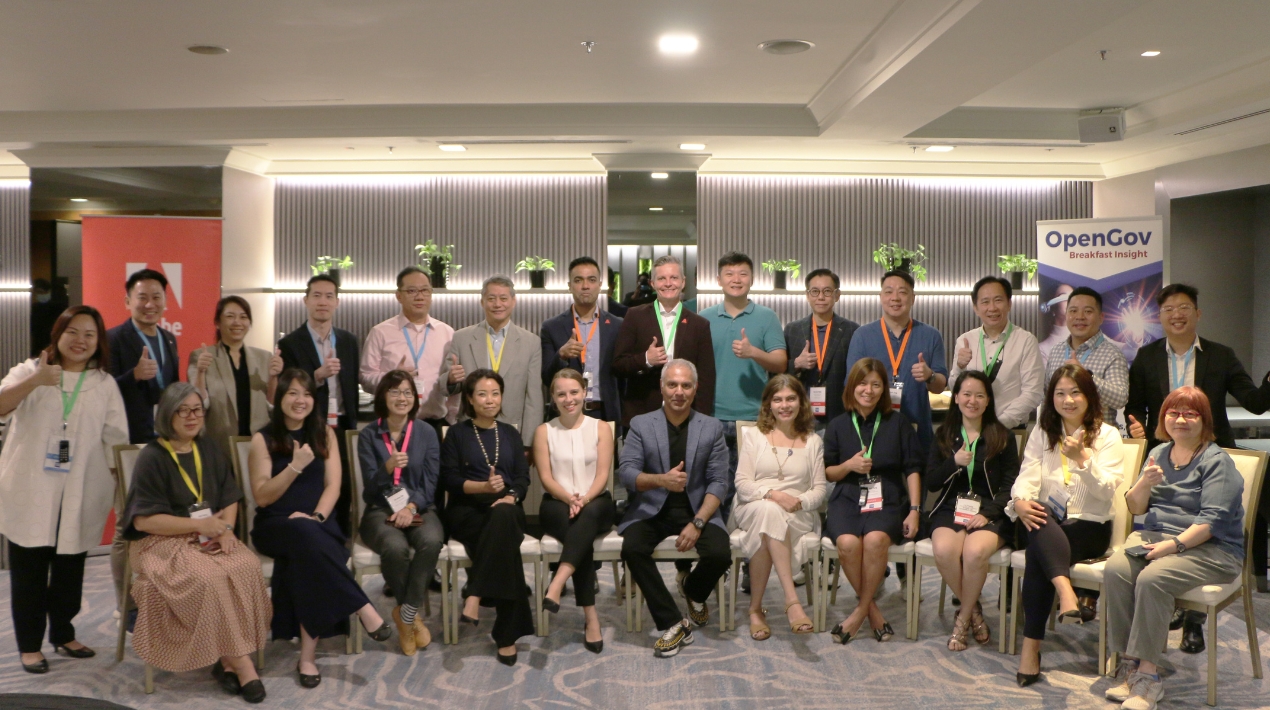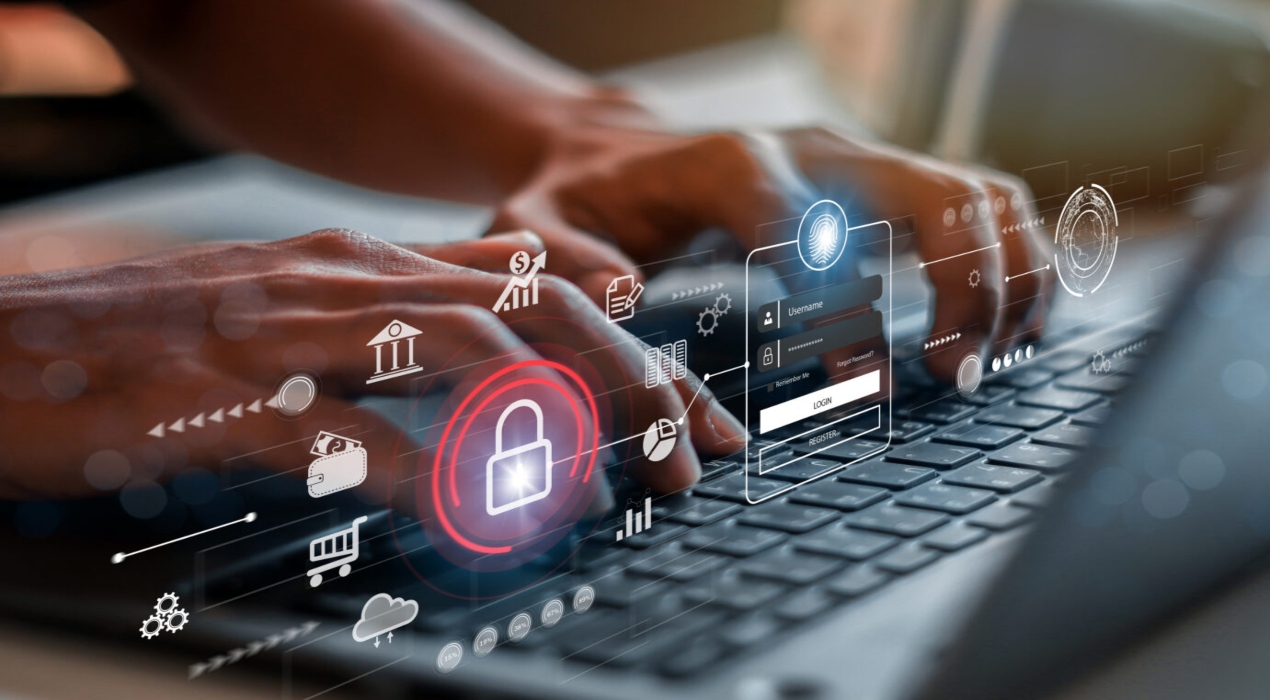
The public sector across the world is undergoing the most extensive digital transformation ever. The urgency with which citizen services must be updated and improved during the previous two years is a direct result of global events. Moreover, the expectation for instantaneous, significant, and individualised digital experiences has also been increased by the epidemic.
As a result of the pandemic, governments have had to rethink services with more innovation and creativity to meet the increased need for faster time-to-value structures that are more agile and collaborative. On the other hand, many organisations in the public and nonprofit sectors felt pressured to improve their digital services to meet rising expectations.
Singaporean government agencies have done an excellent job of providing citizens with cutting-edge, trustworthy digital services in the fields of healthcare, education, and social support. These agencies provided residents with seamless service by utilising cutting-edge digital tools and services such as telemedicine, intelligent chatbots, mobile apps like TraceTogether and distance learning.
While there is still a way to go in transforming many offline services, there is much potential to innovate and provide residents with more user-friendly services. When looking for government services, citizens do not want to fill out numerous forms and browse multiple websites. People have come to anticipate a level of service that is both consistent and easily accessible via the internet.
It is becoming increasingly apparent that government agencies need to better use innovative digital tools and platforms to foster more strategic and all-encompassing community interaction. While this transition is underway, efforts are being made to make sure that those folks who are not technologically savvy are not left behind.
The OpenGov Breakfast Insight on 23 November 2022 at the M Hotel Singapore provided the most up-to-date information on how government agencies may develop seamless, personalised, citizen-centric digital experiences.
Digital Government Provides Simple, Secure, Citizen-Centric Services

According to Mohit Sagar, CEO and Editor-in-Chief of OpenGov Asia, the ultimate test of digital government success is the importance of simple, seamless and secure citizen-centric services.
Adopting a human-centred strategy for every step of the digitalisation process, making sure that the citizens were served with compassion rather than being overly thorough when digitalising every analogue process cannot be overstated.
“We must strive for human-centeredness in our digital government by incorporating service journey mapping and reimagining services and processes along the way to meet citizens and businesses where they are,” believes Mohit.
By adopting agile technological development, organisations are better able to respond to rapid changes and provide better solutions for the current situation.
To ensure that no citizen is excluded, governments are adopting an omnichannel approach to provide seamless, personalised delivery and/or communication of key government services across multiple agencies via digital, phone and physical channels that integrate high-tech functions.
In meeting the public’s expectations for inclusive, equitable and accessible digital services, government agencies are modernising their technology infrastructures. Access to equal and inclusive online and in-person services is a significant focus as they increase their emphasis on the customer experience.
Having rich analysis, content management and hyper-personalisation tools allow both private and public organisations to make their services accessible to everyone.
The public deserves an intuitive digital experience, so the government organisation must make its services available to everyone using tools for hyper-personalisation, content management and rich analysis.
“The Singpass app is the best example of this in Singapore which the government made to ensure a more inclusive and diverse public service,” Mohit shares. “With such solutions, platforms and apps, Singapore’s public sector enjoys high levels of citizen satisfaction, which bodes well for the future.”
A successful digital government will measure citizen satisfaction through key digital services provided by the government and pinpoint areas that need improvement. The main goal is to promote an innovative culture and use new technologies to improve the lives of the citizens.
It is becoming increasingly important that a government comprehends the user experience and impact of its digital services as more people interact with it through websites and mobile applications.
Governments are placing extra emphasis on digital transformation. Offering a seamless digital experience makes sure that the public sector can continue to serve the citizens and be useful and accessible in the future. “An organisation can easily stagnate without a concerted effort when it comes to digital transformation.”
Welcome Address

Shashank Sharma, Head – Digital Experience Business, Adobe South East Asia recognises that the pandemic increased the need to modernise and innovate more quickly than ever before. It also raised the bar for agile open team structures across all industries, including telcos, intending to have faster go-to-market than in the financial and public sectors.
“We’ve been pushed to think creatively and with ingenuity. But the biggest problems we face in the public sector or public service agencies are outdated systems,” says Shashank. “There are legacy systems and databases that are siloed between various government agencies.”
The COVID-19 crisis highlighted the importance of a broad-based strategy for digital transformation. The trade-offs between policy goals may have changed as the health and economic crisis developed.
The fact is that most local governments rely on siloed software systems with data stores that are frequently redundant for decades. The systems never interact with one another or exchange data. Although it might have appeared that this was the best way to maintain the accuracy of the data in each system, in practice it results in duplicate data, errors and workflow issues.
Citizens now have high expectations for government services because they have been enjoying an exceptional digital experience in the private sector where their needs are met immediately – anywhere, anytime on any device.
The term “citizen-centric” refers to a change in the focus of service delivery from the interests of the government to those of the citizens. Although the quality of public services may be comparable across socioeconomic classes, citizens may draw different conclusions about service because of differences in how those services are perceived and expected to perform.
To make digital transformation work for growth and well-being, policies are required. Cross-cutting concerns like gender, skills, digital governance, and data governance must also be considered.
A country can create a coordinated, whole-of-government approach to digital transformation with the aid of a government digital policy that takes into account all citizens’ needs and preferences.
Establishing a governance framework that supports coordination, articulating a strategic vision, evaluating important digital trends and policies and developing and implementing a comprehensive strategy are all necessary steps in the process of reevaluating current digital policies.
To ensure equity and inclusiveness in the projects and services that are delivered, the government is looking to change the policies that affect people’s lives. “As more and more digital services join the public sector, you can be sure that the guidelines will increase.”
Technology Insight

John Mackenney, Practice Director – Digital Strategy APAC at Adobe, discussed the company’s creation of a Rapid Response Programme and COVID resources hub. These were designed to assist the government in adapting to the needs of their workforce and the people they serve when the pandemic hits in 2020.
“At Adobe, partnering across industries to improve digital customer experiences is a significant part of who we are. And we have partnered with governments to unleash creativity, accelerate document productivity, and power the digital business with our platforms,” John reveals.
They have accomplished a goal worth celebrating after a year. In all 50 states of the U.S., Adobe is now collaborating with the federal government as well as with specific agencies at the state, county and city levels – from e-signatures to powering customised communications to constituents.
According to John, citizens expect more individualised digital experiences since they demand more open, dependable, accessible and responsive service. Governments, therefore, must empower citizens and concentrate on increasing public satisfaction while lowering service costs.
Governments today have become more citizen-centric, data-driven, proactive, and responsive to help citizens and businesses, especially during difficult times.
“Making data available that can enhance experiences and economic outcomes is one of the government’s initiatives, as is ensuring that citizens receive consistent and understandable information,” John asserts.
Most countries are concentrated at the emerging level when it comes to customer experience. There is no centralised customer portal for any state, but leaders set themselves apart by customising the user experience (top services, searches, portals) and by digitising high-priority applications.
Moreover, countries are predominantly at the emerging maturity level, like customer experience. Overall, they discovered that most government websites are designed with desktops in mind rather than mobile. As most constituents will attempt to access government websites and information via their mobile device, this is at odds with an accessible strategy. Mobile site speeds typically lag desktop site speeds by 44%.
“We have the widest range of scores across all states in our digital social equity dimension,” says John.
In terms of digital equity, more than half of the states are in the early stages and by focusing on user experience (high contrast, readability, large text, text-only pages), as well as by providing a wide range of language options and services, websites can be made much easier to understand.
Three crucial capabilities are needed to deliver personalised experiences. The first is the data and insights about citizen journeys through both assisted and unassisted channels. Connecting data from various government agencies makes insights accessible to all.
The collaboration and content come in second. Creating content more quickly and widely across all channels (online and off) will maximise cooperation between departments and within agencies when reusing materials.
The third is the journeys – where governments customise the experience on the terms of the citizens and use context to make sure each journey is pertinent, unique, and accessible.
Personalisation of government services, according to John, is enabled by email and web personalisation tools. Both tools enable government agencies to better adapt to citizen needs.
Any personalisation strategy must provide genuine value to citizens and should ideally achieve the following: Make it easier for citizens to find relevant information: make useful information available to citizens who may not be aware of it; reduce information entry that is repeated or unnecessary and assist citizens with complicated transactions.
John suggests that governments should personalise the experience of their citizens for three reasons:
- Time savings due to content accessibility will result in increasing service usage due to streamlined application procedures;
- Time savings and compliance through the fusion of information from various government agencies;
- Time savings by delivering the most pertinent content.
Personalising citizen experiences will enhance the interaction with government services, resulting in quicker and more satisfying decisions and outcomes. “Increased use of government goods and services, then citizens satisfaction follows from this,” concludes John.
Fireside Chat

According to Lucy Poole, General Manager – Digital Strategy, Architecture and Discovery Division, Digital Transformation Agency, Australia, to facilitate improved decision-making, streamlined engagement, increased efficiency, and the rollout of a slew of new digital government services to citizens and businesses, it is essential to recognise data as a critical enabler and to share this data on a whole-government basis.
“Public service organisations must deal with too much complexity and rapid change to effectively respond with what they already have on hand,” Lucy feels.
However, these very same organisations are in a prime position to connect with ecosystem allies who have access to a wealth of resources and skills. This will lead to the operations, services and technologies being expanded into partner organisations.
The Australian government is looking into different ways to build trust, which is crucial as countries recover from the global pandemic and prepare for new challenges. This citizen trust is essential for ensuring the success of a variety of public policies that rely on the public’s behavioural responses.
In this context, the importance of data sharing cannot be underestimated. The pandemic has demonstrated that accelerated data sharing is feasible. The current challenge for government leaders is to institutionalise these data-sharing advancements to support the upcoming innovation wave and the general welfare.
“Governments should start by assuming that the public will find value in data and that it should be shared,” Lucy asserts.
The Australian government has pledged to lead the world’s digital economy and society by 2030 and rank among the top three digital governments by 2025.
With its vision for 2030, the way the government helps its people transition into adulthood, start higher education or training, start a family, retire, take care of a loved one and go through other significant life events is being reexamined and improved.
Additionally, the public will have the option to share information across pertinent services and personalise services. By pre-filling and submitting their forms upon request, pre-evaluating their eligibility and initiating automatic payments, will offer a seamless experience.
Personalised government services will benefit those who need them most while also being more convenient for everyone.
The country aspires to improve its ability to collaborate with its organisations and community to enable better service outcomes. “To streamline our engagement and free up the public to concentrate on achieving the results they are passionate about; we will use technology-enabled platforms,” Lucy opines.
To achieve this, the Australian government is looking to make the appropriate investments in digital and ICT-enabled infrastructure at the appropriate time and approach. The Digital Transformation Agency of Australia will help agencies to harness the true potential of advanced technologies.
The Digital Transformation Agency provides strategic advice and assurance to the Australian Government on its digital and ICT-enabled investments to help drive the transformation of public services.
Some of the benefits and challenges of coordinating investment across government are that government employees and contractors must possess the necessary skills to spearhead the government’s efforts to transform into a digital economy. Using both established and emerging technologies, they must aid in building better services.
“To make training, hiring and career development for the Australian Public Service easier, we will identify and describe the digital skills we need. This includes initiatives to find new talent through cadetships, graduate placements, and internships,” Lucy explains.
These digital skills are being ingrained throughout the government. The investment is a part of the modernisation fund established by the Australian Government in partnership with the Australian Public Service Commission.
“We anticipate that as new skill requirements materialise, this capability will change,” says Lucy. “Cybersecurity and cloud computing management, as well as design and research skills, are emerging needs. To support Australian small and medium-sized businesses in the future, the nation needs to pinpoint areas where they can develop new capabilities.”
The delivery of digital transformation will be led by Australian businesses and their workforce. They will purchase cost-effective technology from around the world and implement it using Australian skills and ingenuity.
“We will manage risks for the government and our business partners through the way we interact with our suppliers, and we are changing our sourcing policies to make the government more business-friendly,” Lucy says. “This method of modern procurement is collaborative and iterative. It enables the government to purchase goods and services with less risk and for a better price.”
Closing Remarks
Shashank noted that all delegates agreed to prioritise digital experiences and he encouraged them to begin their seamless journey. Data connectivity, he is convinced, enables governments to drive relevant, personalised interactions and is becoming increasingly important in the realm of innovation. “It adds value to citizens.”
Governments should put the interoperability of services to make sure that the data and citizens relate to the digital journey. Essentially, interoperability is the fundamental capability of various computerised goods or systems to connect and exchange data with one another without hindrance in either implementation or access.
Shashank reiterated that equity and accessibility considerations for a digital journey are vital to success as were empowering policies and trust in the government.
“A key component of the developing global economy, which is increasingly dependent on connectivity, data use, and new technologies, is digital trust,” says Shashank. “Technology needs to be secure and used responsibly to be trusted.”
Mohit underscored the importance of a skillset in the digital journey. Relevant expertise will assist businesses and services in generating leads, increasing demand and attracting traffic. “With the appropriate strategy and execution, the right skill set will help people in all roles understand how their contributions can more effectively drive success.”
Moreover, he recognises the importance of cloud technology. The cloud allows organisations to scale and adapt at a rapid pace, accelerating innovation, driving business agility, streamlining operations and lowering costs.
Finally, in this ever-evolving landscape and VUCA environment, partnerships are essential and inevitable. Through the right alliances, every organisation will be able to reap the benefits of digital transformation.
“Because digital partnership enables them to modernise legacy processes, accelerate efficient workflows, bolster security, and increase profitability,” Mohit concludes.
















